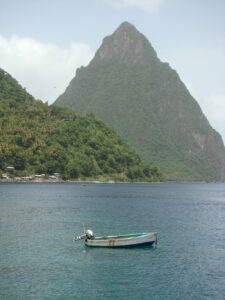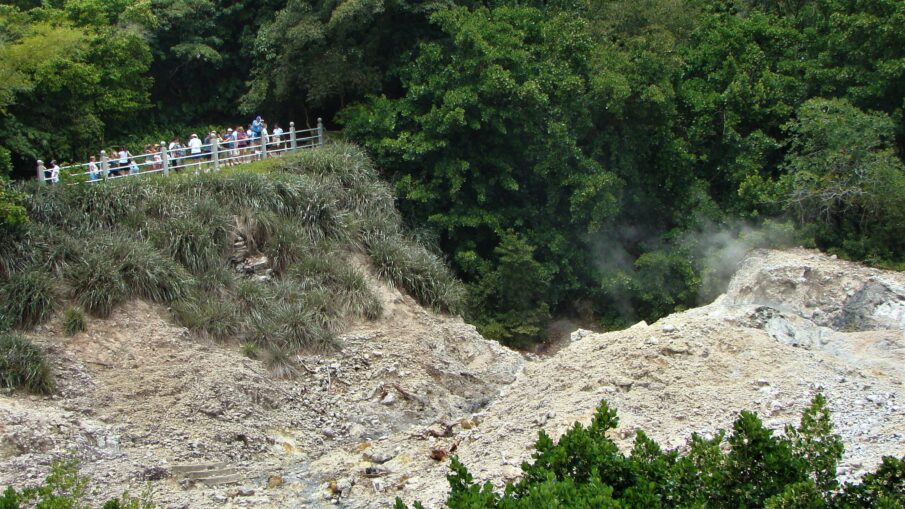The cynics (please count me as one) will roll their eyes when approached about a possible visit to a “Drive-In Volcano” in the Lesser Antilles.
One might expect to find Fred and Wilma Flintstone camped out with Dino, Pebbles and Bam-Bam in the back seat.
But there really is an attraction in the island nation of St. Lucia called Sulphur Springs Park, about 25 miles southwest of Castries and near the town of Soufriere. Castries is the national capital and the point of entry for most St. Lucia visitors. The cruise terminal there bustles with arrivals and departures. From Castries, you can book tours or rent a car.
But can you actually drive into a volcano?
Yes and no.
You can drive within a few feet of the volcano, but you’ll need to disembark and walk to an observation path that is a safe distance from the steam and heat. You’ll be driving into a zone that bears the scars that volcanic lava flows — even ancient ones — impose on landscapes.
This volcano last erupted in 1766. Although it is now classified as dormant, it still boasts an array of boiling springs and fumarole — a fancy word for vents in the earth’s surface from which emerge sulfuric gases and steam. You’ll smell the sulfur (spelled sulphur outside the United States) and at certain times, see huge plumes of steam that make for impressive photo opportunities.
All the geothermal activity in this area makes possible a host of volcano-related experiences for visitors.
Care for a mud bath?
Fed by warm water from the springs, a Black Water Pool caters to people who don’t mind getting covered in muck. The promise here is that the mud will produce healthier, rejuvenated skin. My suspicion: people come here to get pictures of themselves caked in mud that they can show their neighbors and Facebook friends.
A guided 20-minute tour of the volcano for adults is $9 USD (American dollars are accepted in St. Lucia), and you’ll pay $10 for the mud bath. Combining the two activities saves $4.
Sulphur Springs Park is part of a much larger and most impressive UNESCO World Heritage Site. The Piton World Heritage Site covers about 11 square miles and includes the island nation’s iconic and volcanic rock spires that really do look like the landscape from a Flintstones cartoon. The rock formations jut upward about 2,300 feet from the ocean surface and attract hikers and climbers from around the world. The climb amid 148 plant species, including eight rare tree species.

Speaking of the ocean, not far from Soufriere and within viewing range of the pitons is Anse Chastanet, a resort built into a lovely cove that supports a vast array of marine life. This makes for some of the best, most convenient snorkeling you’ll find anywhere. Because the law in St. Lucia dictates all waterfront property must be accessible to the general public, visitors who are not resort guests may snorkel here at their own risk. But the lounge chairs and patio amenities are for guests only.
What a surprising travel find: a drive-in volcano, UNESCO World Heritage Site, and world-class snorkeling all only a few miles apart. It’s enough to make you want to exclaim “Yabba Dabba Do!”
If You Go

